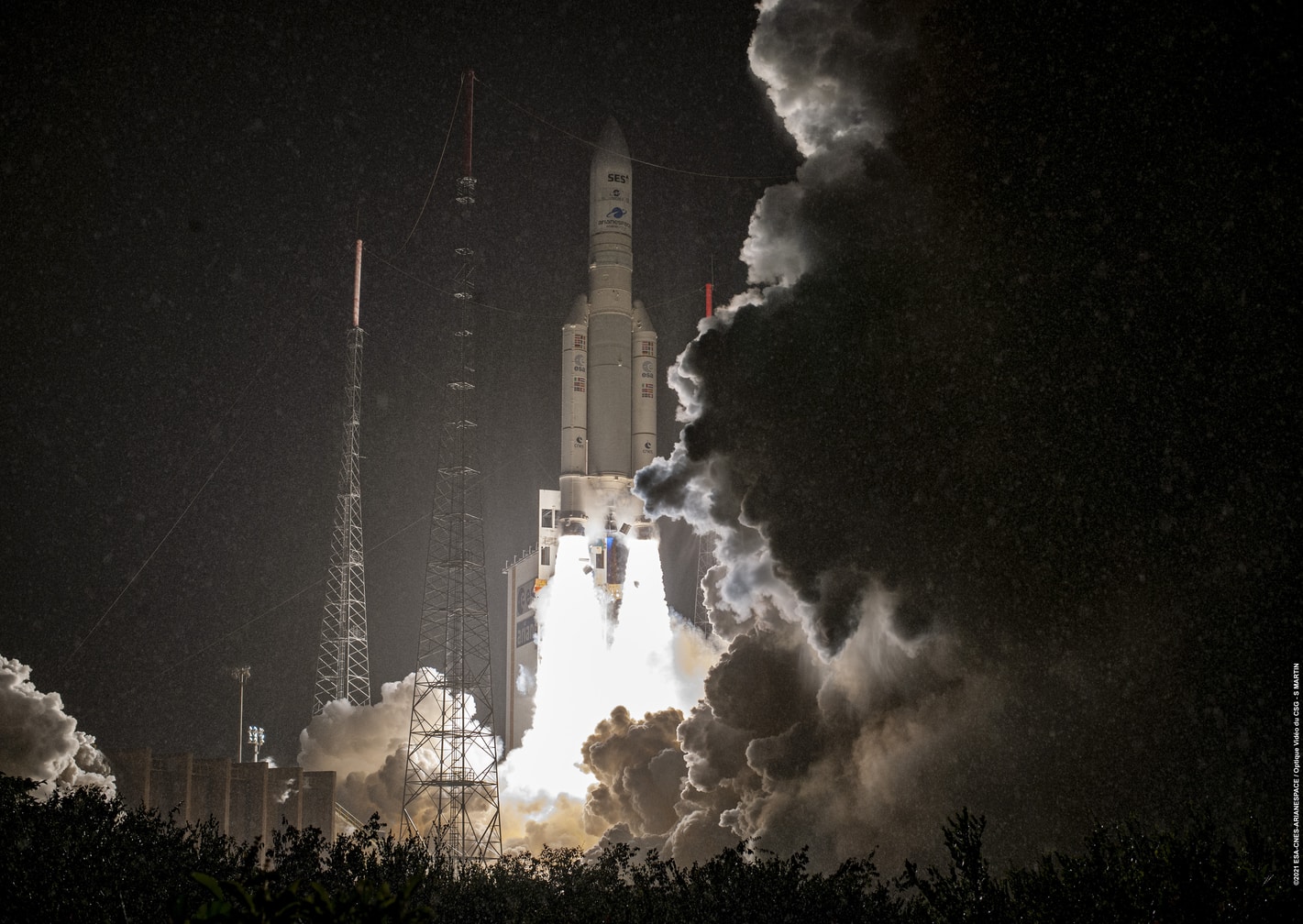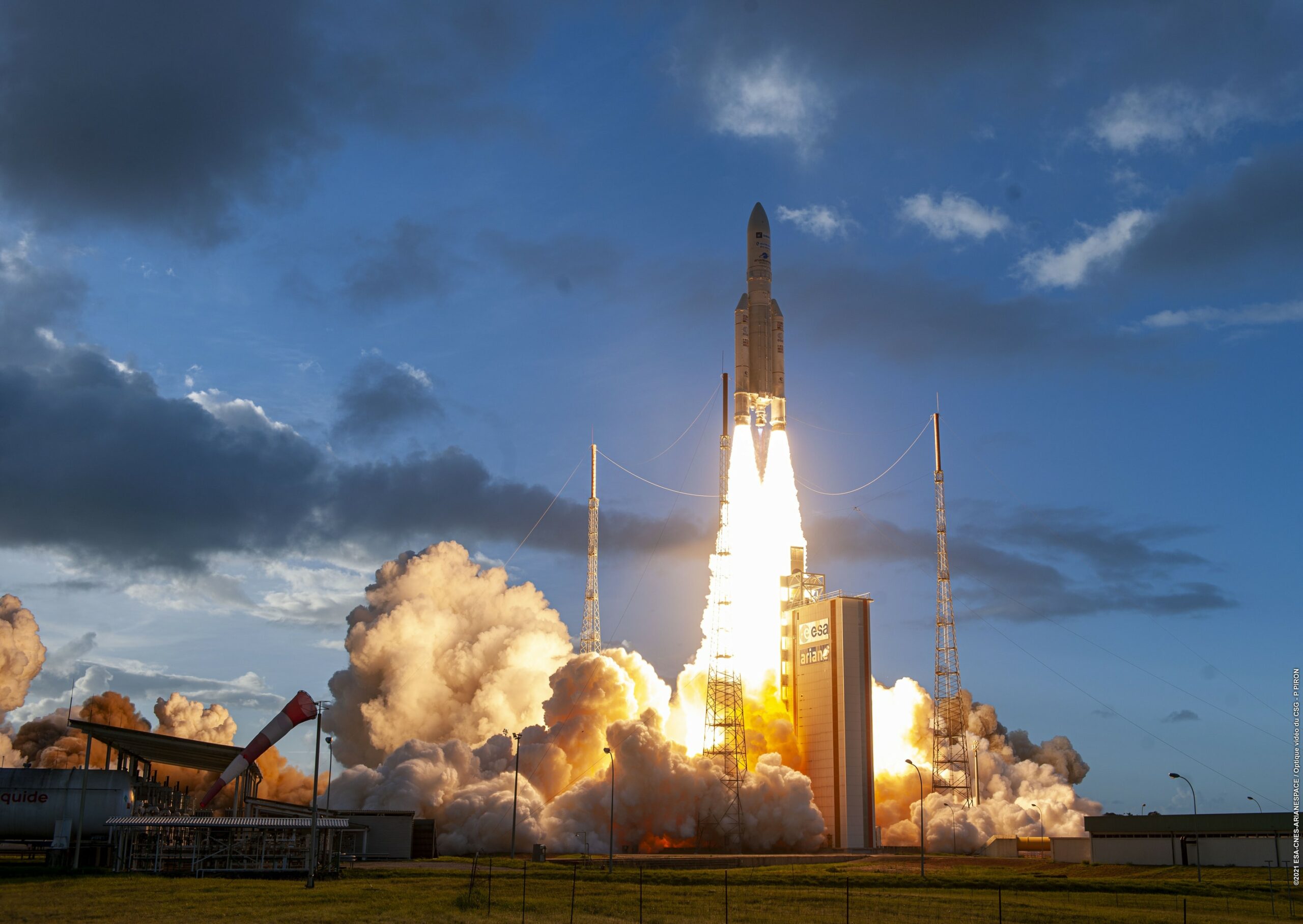
Ariane 5 places two satellites in geostationary transfer orbit
This Space News was published on Sun, 24.10.2021 – 19:29 CEST, covering ArianeGroupThe 111th launch of an Ariane 5 rocket set several records at once. With a total weight of 10,264 kg, two satellites were placed on a Geostationary Transfer Orbit (GTO) - more than ever before.
Ariane 5 is ESA's workhorse. On its 111th launch, the 11th in 2021, it placed two satellites manufactured by Thales Alenia Space into a geostationary transfer orbit. From this highly elliptical orbit (usually about 200 x 36,000 km), the satellites are subsequently transferred to a geostationary orbit. In order to be able to launch the two satellites SES-17 and SYRACUSE 4A into orbit in one launch, the payload fairing was extended by 1.5 meters. This gave Ariane 5 a total height of 56.4 meters.
The launch took place on October 24, 2021, at 02:10 UTC (Coordinated Universal Time, 04:10 CEST) from the European Spaceport in French Guiana. Stéphane Israël, CEO of Arianespace, sees the successful launch as proof of the company's future viability.
VA255 has launched two highly innovative satellites from Thales Alenia Space. This once again underlines the competitiveness and reliability of our launch solutions, which support the ambitions of our private and institutional customers. The two satellites, representing connectivity and security, symbolize the heart of our mission to improve life on Earth thanks to space.
Stéphane Israël, CEO Arianespace
SES-17 and SYRACUSE A4 - civil and military communications satellites

© Arianespace

© Arianespace
SES-17 is a satellite designed to significantly improve communications in the Americas, the Caribbean and areas on the Atlantic Ocean. The power of its nearly 200 spot beams can be dynamically adjusted to meet changing customer requirements. It is one of the largest satellites ever launched by Arianespace. SYRACUSE A4, on the other hand, is designed to provide military communications "on land, at sea and in the air." This satellite will also support NATO and European-led missions.
Ariane 5 to go, Ariane 6 to come
Despite the records that have now been set, the days of Ariane 5 are as good as numbered. Although its successor, Ariane 6, was scheduled to launch as early as the end of 2020, it is now scheduled for the end of 2022. However, as André-Hubert Roussel, CEO of ArianeGroup, points out, this is no reason to relax: "We are continuing to improve the European heavy-lift rocket Ariane 5, which still has six launches to go before it will go down in history as the world's most reliable launcher and clear the way for Ariane 6, which will replace it from 2022." The next significant launch will take place on Dec. 18, 2021. That's when the new James Webb Space Telescope is scheduled to launch several years late, also from Kourou on an Ariane 5, replacing the Hubble Space Telescope.
via Arianespace
